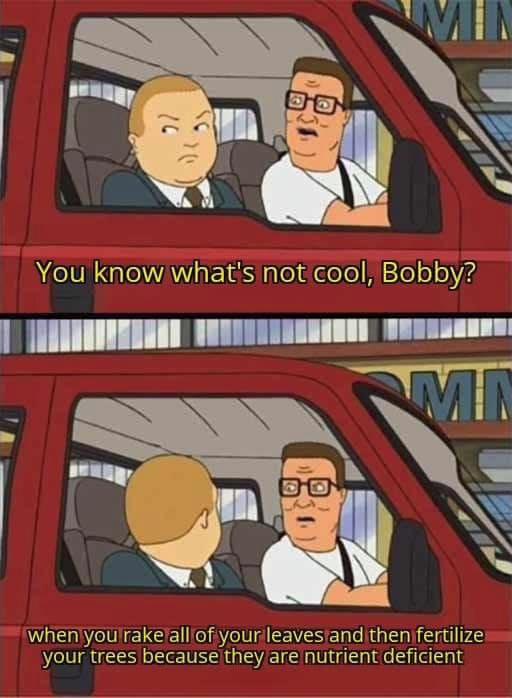this post was submitted on 27 Nov 2024
512 points (98.5% liked)
Science Memes
11223 readers
2991 users here now
Welcome to c/science_memes @ Mander.xyz!
A place for majestic STEMLORD peacocking, as well as memes about the realities of working in a lab.

Rules
- Don't throw mud. Behave like an intellectual and remember the human.
- Keep it rooted (on topic).
- No spam.
- Infographics welcome, get schooled.
This is a science community. We use the Dawkins definition of meme.
Research Committee
Other Mander Communities
Science and Research
Biology and Life Sciences
- !abiogenesis@mander.xyz
- !animal-behavior@mander.xyz
- !anthropology@mander.xyz
- !arachnology@mander.xyz
- !balconygardening@slrpnk.net
- !biodiversity@mander.xyz
- !biology@mander.xyz
- !biophysics@mander.xyz
- !botany@mander.xyz
- !ecology@mander.xyz
- !entomology@mander.xyz
- !fermentation@mander.xyz
- !herpetology@mander.xyz
- !houseplants@mander.xyz
- !medicine@mander.xyz
- !microscopy@mander.xyz
- !mycology@mander.xyz
- !nudibranchs@mander.xyz
- !nutrition@mander.xyz
- !palaeoecology@mander.xyz
- !palaeontology@mander.xyz
- !photosynthesis@mander.xyz
- !plantid@mander.xyz
- !plants@mander.xyz
- !reptiles and amphibians@mander.xyz
Physical Sciences
- !astronomy@mander.xyz
- !chemistry@mander.xyz
- !earthscience@mander.xyz
- !geography@mander.xyz
- !geospatial@mander.xyz
- !nuclear@mander.xyz
- !physics@mander.xyz
- !quantum-computing@mander.xyz
- !spectroscopy@mander.xyz
Humanities and Social Sciences
Practical and Applied Sciences
- !exercise-and sports-science@mander.xyz
- !gardening@mander.xyz
- !self sufficiency@mander.xyz
- !soilscience@slrpnk.net
- !terrariums@mander.xyz
- !timelapse@mander.xyz
Memes
Miscellaneous
founded 2 years ago
MODERATORS
you are viewing a single comment's thread
view the rest of the comments
view the rest of the comments

Hi, arborist here! Fallen leaves are generally pretty low in nutrients--trees send back as much as they can into the tree before dropping them. So, you probably don't need to fertilize shade trees whether they stay or go. The bigger issue is that removing a huge input of carbon into the soil leaves you with low organic matter and lowered ability to retain what nutrients do exist. This poor soil quality will stress your trees, but adding fertilizer doesn't address the root issue.
Fruit trees generally do need to be fertilized since fruits are much higher in nutrients and are not generally returned to the soil unless you're doing some kind of poo composting scheme.
Point of clarification: organic matter doesn't really retain the nutrients but acts as the slowly mineralized pool of nutrients associated with soil quality.
The way you describe it is similar to how a sponge works rather than a storehouse.
You are right, though, in that you don't need to fertilize trees for the most part. Forest soils are hilariously low in nutrients: TOC is around 1% and N is next to non existent (N is highly labile), while P and K are moderate to high. As a result, forests veg is most competitive in nutrient poor conditions. If you fertilize a disturbed area, you get a pile of weeds and grass that can set back your revegetation timeline because your desirable woody spp now have to out-compete them. This process still happens if you don't fertilize, but it's generally less pronounced and allows some woody plants to gain the foothold they need
I read a while ago that trees attempt to reduce competition by dropping their leaves to prevent saplings growing too near. Was that all bunk?
Not bunk, but not an evolutionary strategy, I imagine. Leaves are dropped because they are too hard to maintain, rather than the benefit the trees get from mulching out competition.
I'm not directly aware of any trees that do that, but it honestly wouldn't surprise me if that was true for at least one species.
Most trees that drop seeds have methods of getting them away from the parent tree. Maple trees have little helicopter twirlies, oak trees have animals carry them off, some trees grow new ones from their roots called suckers.
I'll try to look it up later because now I'm curious. I'll update here if I find anything interesting about trees dropping leaves to prevent new ones growing too close.
I don't think my arborist textbook said anything about that specifically, but I'll double check there first.
Thanks!
Some trees do a bit, I guess? Like, beech trees will release some chemicals to inhibit other plant growth, and iirc their leaves do that as they decompose, as well as the root system itself. But depends on the plant and mostly bunk I believe.
Thanks
Oh that's so cool, thankyou for sharing!
I don't have my books handy, but while they take a lot back this varies by species and the fallen leaves can have a lot of N and P in some cases.
Though I've always seen them shredded and used for making compost anyway rather than leaving them on the ground. Too easy to get rot that way. And you really want to spread them around the rest of the garden if you've planted trees that do drop N in the leaves
I’m sure it does vary—my impression is that N fixing trees in particular are going to have higher N levels in the leaves they drop but I’m sure it varies by species as well.
But from my experience, most urban shade trees don’t really need to be fertilized unless they are exhibiting symptoms of nutrient deficiency—and even then, this is often a symptom of poor soil and root health overall more than a specific lack of a nutrient. Most urban soils tend to be fairly high in nutrients due to air pollutants, excess fertilizers, pet feces, etc. I’m sure this can also vary by soil type and climate, but it’s true in most areas I’m familiar with.
No I agree, it's mostly useful to fertilize the plants elsewhere in the garden.
But it seems everyone here is thinking of lawns and I realise late my concept of a garden is utterly alien to what most people actually do. No lawns for me!